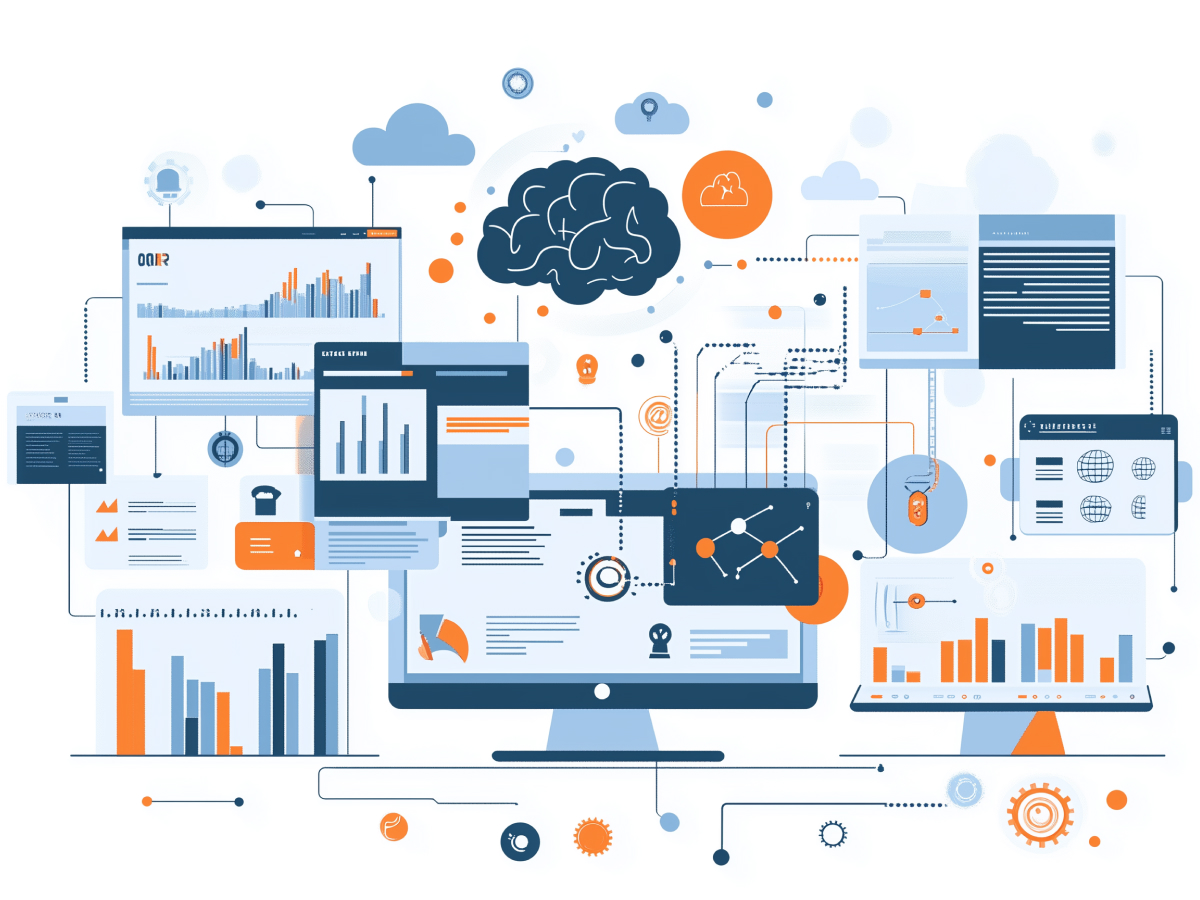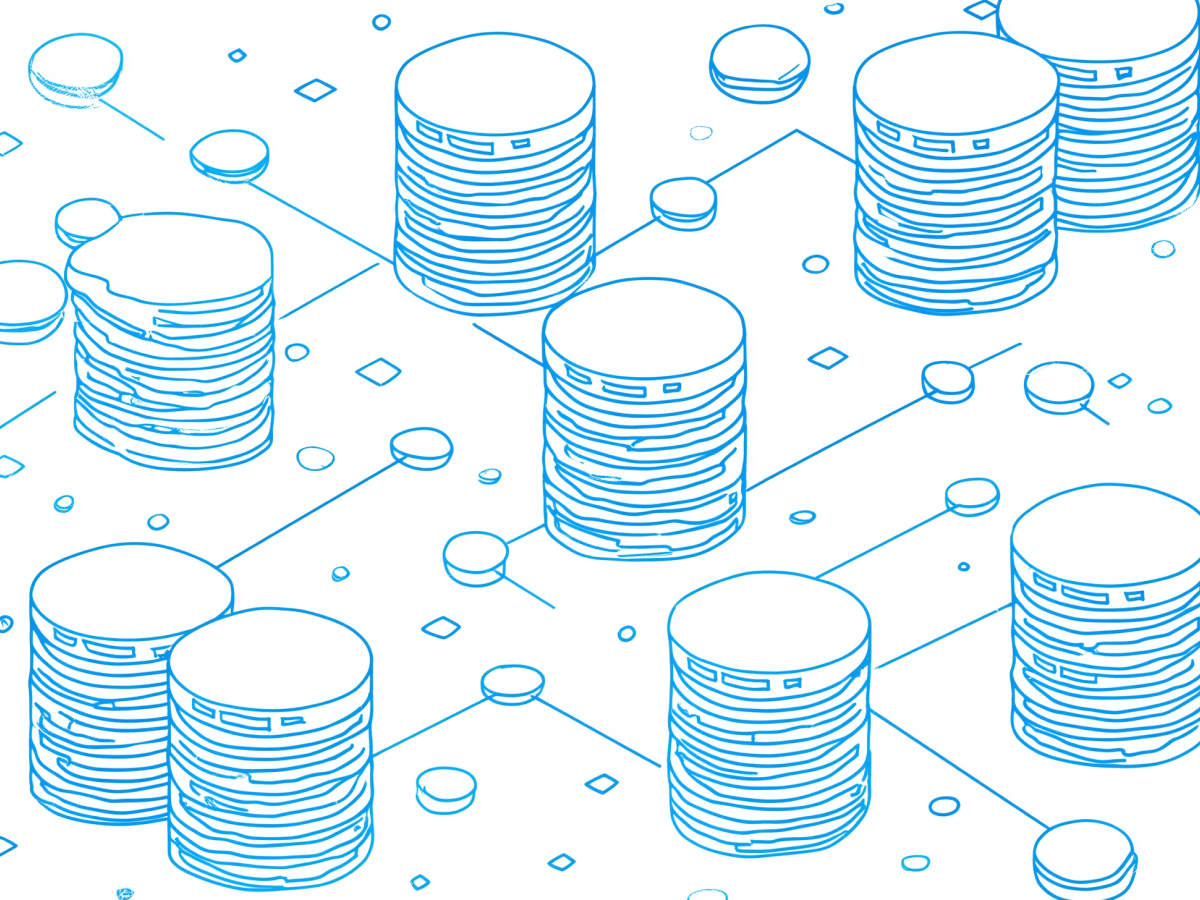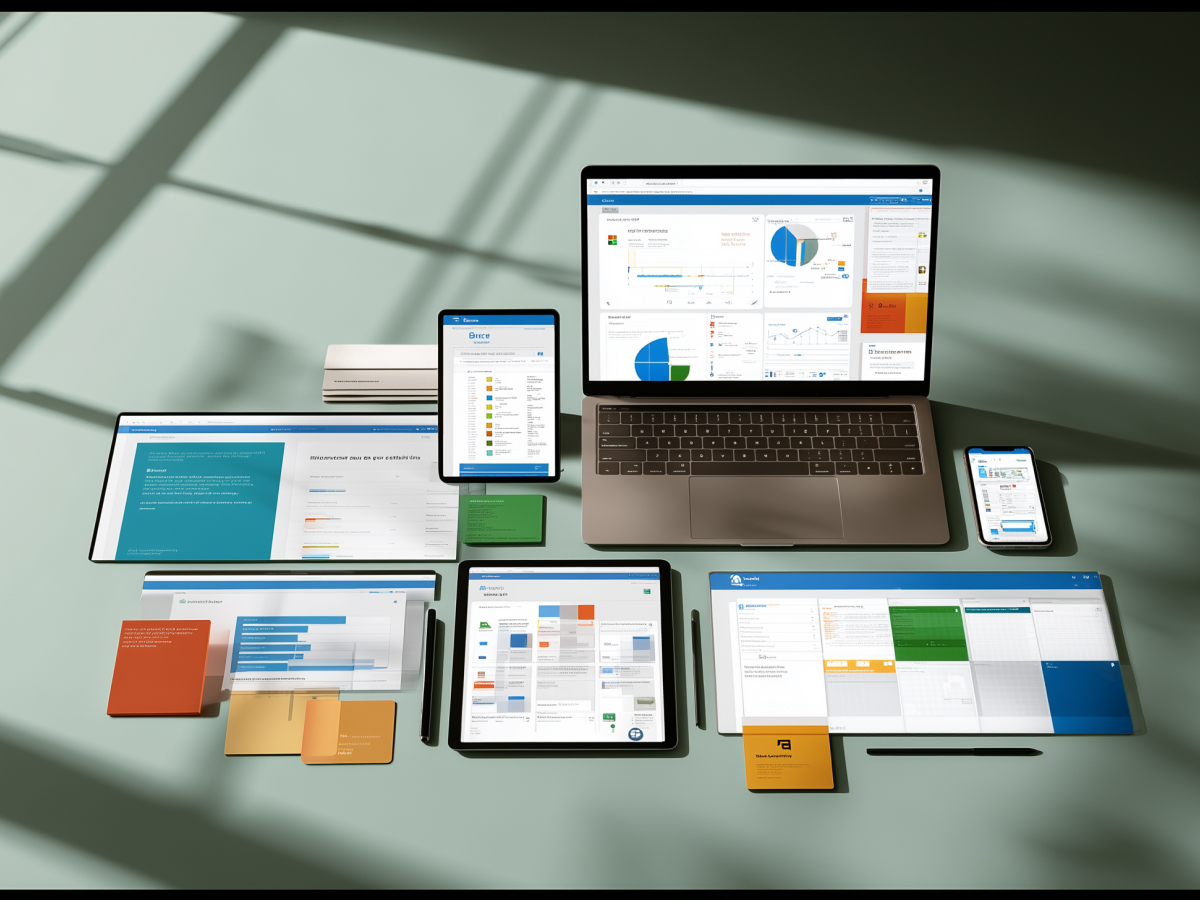Marketing funnel automation is key for personalized customer engagement
Automation isn’t optional anymore. It’s how you scale. It’s how you stay precise without hiring an army. If you’re dealing with hundreds or millions of customer interactions, you don’t manage each one manually. You automate them. Not to cut corners, to increase impact. You use tools that identify the right message, deliver it at the right time, and track what works and what doesn’t. That’s the foundation of funnel automation.
Marketing funnel automation connects everything, your website, email, CRM, paid ads. The customer journey becomes coherent. You move from noise to signal. That’s when your team stops playing whack-a-mole with newsletters or campaign timelines and starts engineering predictable outcomes. When a user subscribes to your content or clicks on an ad, you respond instantly and contextually. You align that behavior with where they are in their buying process. And they feel like your message was meant for them.
This isn’t about efficiency for its own sake. It’s about smart execution at scale. Gartner research shows companies that deploy automation across their marketing funnel outperform competitors in lead conversion and customer retention. The result: more impact, fewer wasted cycles.
Automation unlocks reach and precision. But to extract full value, it must be executed with rigor. Your automation architecture reflects how well you understand your customers, your sales cycles, and your product positioning. If your funnel is built on shaky logic or poor data, no tool will save it. Executives need to treat funnel automation as both a technical asset and a strategic lever.
Marketing funnels meticulously guide customers through key behavioral stages
Every customer who eventually buys from you passed through a series of predictable steps, most of the time unconsciously. That’s what the marketing funnel is. First, they notice you exist. Then they explore what you offer. They compare you to others. Eventually, they’re ready to act, if you’ve done everything right along the way.
The funnel has structure. It starts with awareness. A buyer sees your brand via search, video, email, social, doesn’t matter. They’re not ready to buy. They’re just aware. If you do your job and serve the right content, that awareness becomes interest. If the content connects, interest grows into consideration, they’re evaluating your position. Once they begin to lean in, you’re at intent, where focused messaging makes the difference. Finally, if the pieces hold, you land the purchase. Many companies stop here. The smart ones go further, they prioritize retention, upsell, and referrals.
You can’t leave this journey to chance. Funnel structure gives you a roadmap to measure and optimize. It helps your team ask the right questions: What’s working at the top? Where are we losing people midway? Which signals tell us someone is ready to hear a price? Without that system in place, you’re blind to what’s driving conversions, or worse, what’s killing them.
As a C-suite decision-maker, you’re not the one pulling reports or designing email sequences. But you need to know where customers fall off the map, and why. You need visibility that turns into strategy. Understand this: your funnel is not for marketers. It’s for growth. When it works, revenue flows faster and more predictably. When it doesn’t, growth feels like guesswork.
Distinguishing between marketing and sales funnels clarifies responsibilities and optimizes the customer journey
Marketing and sales are often blended into one conversation. That’s a mistake. They’re not the same. Marketing brings people in. Sales converts them. The marketing funnel is where you build awareness, attention, and trust. Sales steps in once intent becomes action, when someone signals interest and needs guidance to make a decision. The clearer you make that handoff, the better your outcomes.
Let’s simplify this operationally. Marketing owns the upstream content, campaigns, and engagement tactics, videos, lead magnets, email sequences, thought leadership. Their job is to create momentum. Sales takes that momentum and turns it into closed deals. But here’s the key: if your marketing team doesn’t understand what a sales-ready lead looks like, or the sales team doesn’t know what their cold leads have seen, you’re losing deals. Automation solves this disconnection. It ensures both sides know what happened before contact.
The most competent teams integrate their funnels. Every tracked email, video view, or product page visit feeds into the CRM or sales platform so that the handoff from marketing to sales is contextual and informed. That doesn’t just improve win rates. It shortens sales cycles. The customer hears a consistent message the whole way through.
Leaders need to kill silos. The separation of marketing and sales is functional, not philosophical. You’re not pitting one department against another. You’re creating operational clarity. Automation brings shared visibility. The messaging aligns, the insights are shared, and each team works with real data. That’s how pipeline becomes predictable and conversions become repeatable.
Automating the marketing funnel saves time and enhances lead nurturing
Repetition kills productivity. Manually tagging leads, sending email sequences, following up on form fills, none of these tasks should require human effort anymore. That’s not where value is created. Automation does them faster, cleaner, and without margin for error. This frees up your team to focus on creative strategy, not administrative cycles.
Lead nurturing is where automation delivers maximum return. People don’t buy because they got one email. They respond to consistent, relevant signals. Automation schedules those signals with precision based on what leads have done previously, what they’ve clicked, what they’ve read, what they downloaded. Someone requests pricing? They get a relevant case study. Someone opens your emails weekly but never clicks? Find out where you’re losing them. These actions can be planned and launched at scale, in real time.
The result is higher quality leads moved efficiently through the pipeline. Salespeople are no longer chasing unresponsive contacts. They’re focusing on prospects who’ve interacted, signaled intent, and met engagement thresholds. Marketing doesn’t just generate leads, it warms them up in advance of the sales conversation.
Executives should think of this not just as “saving time,” but as “reallocating time to higher return areas.” Every hour your team spends on automation setup is time saved in perpetuity, and a step toward growth that doesn’t rely on adding headcount. Automation also adds consistency in lead qualification, which means fewer bad fits moving forward and more closed deals downstream.
Real-time data and insights boost funnel efficiency and facilitate continual optimization
What you don’t measure, you can’t improve. In a high-performance marketing setup, guessing is expensive. With automation in place, you get continuous, real-time feedback at every stage of the funnel. You see where prospects are pausing, dropping off, or leaning in. That’s how you refine your campaigns, not based on assumptions, but on evidence.
When you automate data collection and visibility, marketing stops being reactive. You’re viewing performance in real time and responding with updates that are timely and accurate. Messaging can be adjusted based on which emails get opened or which content leads to a click. This isn’t just about fixing problems. It’s how you identify what’s working and scale it further.
The effect compounds across your funnel. Optimizing subject lines, landing pages, and call-to-action (CTA) placements becomes a predictable process. As a result, your lead flow is cleaner, conversions go up, and irrelevant content gets eliminated. Campaigns are no longer built on guesswork or past success, they’re shaped by live insights connected to performance.
C-suite leaders should focus on establishing strong feedback loops between the marketing data and broader business strategy. The deeper the visibility, the faster you unlock insights that affect revenue, retention, and product direction. Your teams should not only look at what customers are clicking, but what those behaviors reveal about shifting market needs.
Automation enables more effective alignment between marketing and sales teams
Most companies have a disconnect between marketing and sales. Too much time is wasted validating leads, clarifying engagement history, or syncing systems. Automation fixes that. It moves lead information from one team to the other instantly, with full context. Sales knows what marketing sent, what the lead interacted with, and where they are in the buying cycle, without needing to ask.
This creates clarity and precision. A sales team approaching a lead who’s already been nurtured by a sequence of content knows exactly how to continue the conversation. The same messaging carries through. The same positioning is reinforced. That continuity increases trust and removes friction in the buyer’s experience.
Marketers also benefit. Feedback from sales on what leads converted, and why, feeds back into the automation workflows. Better segmentation, smarter scoring, and strategic pacing emerge from having aligned data and teams. You don’t need marketing and sales fighting for control. You need them operating from the same system, using the same signals, with aligned priorities.
For executives, this alignment isn’t a matter of internal harmony, it’s a revenue multiplier. When marketing and sales execute in sync, close rates improve, pipelines stay cleaner, and forecasting becomes more accurate. When they drift apart, friction builds, win rates drop, and spend increases without return. Automation doesn’t just streamline operations. It aligns them to business outcomes.
A robust martech stack is foundational to successful funnel automation
If your tech stack is fragmented, your automation won’t scale. You need unified systems that share real-time data and support coordinated execution. Marketing Automation Platforms (MAPs), Customer Relationship Management (CRM) systems, Customer Data Platforms (CDPs), and analytics tools each play a distinct role. Together, they form a unified infrastructure that powers automation and decision-making across your customer journey.
The MAP handles targeted actions, email marketing, lead scoring, workflows. The CRM stores detailed customer history across engagement points. CDPs consolidate behavioral data from multiple sources to build complete user profiles. Analytics tools turn raw data into usable insights. Without these core systems working together, you won’t get the speed, granularity, or cohesion needed to operate effectively.
Scalability depends on integration. MAPs like HubSpot and Marketo push performance data into CRMs like Salesforce, while CDPs such as Segment connect activity across devices and channels. Properly configured, these tools allow your teams to coordinate around a single view of the customer. That means more personalized experiences and less wasted outreach.
From the C-suite perspective, this is a matter of control and clarity. These tools aren’t just for marketers, they’re for alignment, accountability, and speed. Your martech stack should offer cross-functional transparency. Everyone should be able to track what’s happening inside the funnel at any point without relying on manual updates or siloed reporting.
Smart segmentation powered by AI enhances personalization across the customer journey
Generic marketing no longer works. AI-powered segmentation is what makes personalization scalable. Data from multiple sources, web behavior, demographics, purchase patterns, email engagement, creates intelligent groupings that react to real-world signals. Instead of guessing who your user is, you know what they do, what they want, and where they’re most likely to convert.
AI does more than monitor metrics. It identifies correlations and predictive signals: who’s likely to churn, who’s ready to upgrade, who responds better to video than email. That level of insight can’t be generated manually or by basic filters. With AI and machine learning embedded in your segmentation, your automation becomes dynamic, it adjusts in real time based on new behavior.
CDPs sit at the center of this. They unify scattered data sources while maintaining quality and compliance. That allows your teams to build segment logic that adapts to shifting patterns, like seasonality, pricing sensitivity, or product interest areas, and deliver deeply relevant messages to each group without redoing campaign logic.
For leadership, the key isn’t just collecting smarter data, it’s applying it with precision. Clear segmentation drives product positioning, pricing strategies, campaign focus, it reveals demand signals early. If AI-driven segmentation shows emerging pockets of buyer interest in a specific product tier, that information directly shapes pipeline and forecasting accuracy.
Automated content delivery ensures messaging remains relevant and personalized
Automating your content delivery is one of the highest-impact moves you can make. Timing and relevance define performance. Without automation, most content arrives late, out of context, or off-target. With the right systems in place, every user interaction triggers the next logical step, a tailored email, a product recommendation, or an incentive. All of it based on real behavior.
AI and automation tools allow you to monitor interaction patterns across channels. If someone watches a product demo, they can be served a use-case article. If they abandon checkout, a targeted offer follows. These scenarios aren’t manual decisions, they run automatically, calibrated to actual customer intent. The content adjusts continuously based on engagement signals, not static audience definitions.
Automated content also ensures brand consistency across platforms. Whether it’s delivered via email, onsite pop-up, or paid retargeting, the message aligns with what’s already been seen. This consistency builds trust faster and reduces confusion that can lead to drop-off. It also allows for testing at scale, one change can impact results across thousands of impressions in minutes.
Senior leaders should look beyond campaigns and focus on relevance at scale. This isn’t about having more content; it’s about delivering the right content at the moment it’s needed. It’s not enough to know what users did, you need to put that insight into automated action. This operationalization of personalization directly affects revenue, retention, and product velocity.
AI-powered lead scoring prioritizes high-value prospects, driving more effective follow-ups
Most leads won’t convert. The challenge is knowing which ones will, and when to act. That’s where AI-powered lead scoring becomes critical. By analyzing large volumes of historical and behavioral data, it ranks prospects based on how likely they are to convert. This ensures that sales doesn’t waste time chasing cold leads while marketing focuses on profiles that generate pipeline.
The strength of AI in lead scoring is its pattern recognition. It picks up on subtle behaviors, frequency of page visits, types of content viewed, responsiveness to past campaigns, and correlates those with actual conversion outcomes. That data creates a dynamic score that updates in real time. High-value leads surface faster, and teams can respond with targeted messaging at the moment interest peaks.
It doesn’t stop there. Lead scoring improves data hygiene by surfacing outdated or inactive contacts, which helps keep records manageable and actionable. It also informs segmentation logic, meaning your other automated flows become smarter as lead scoring evolves. It’s a continuous feedback loop, smarter scoring, smarter targeting, better results.
Executives need to view lead scoring not just as a marketing tool, but as a sales acceleration mechanism. It limits distraction, enhances conversion probabilities, and supports resource prioritization. If sales is spending too much time qualifying or renavigating cold leads, it’s a symptom of weak scoring. Fixing it isn’t just process improvement, it’s revenue efficiency.
Effective drip campaigns nurture leads with structured, automated touchpoints
Decision-making isn’t immediate for most customers. Drip campaigns solve that by maintaining consistent contact over time through automated, behavior-triggered sequences. These are planned communications designed to educate, engage, and qualify leads at different points of the customer journey. Well-structured drip campaigns reduce the risk of leads going cold due to inactivity or missed follow-ups.
These campaigns are informed by previous actions, downloads, page visits, video views, or form completions. Based on these inputs, the system sends tailored content: a how-to guide, a case study, an invitation to a webinar, or a product walkthrough. Every message is linked to a specific user behavior and matched with their stage in the buying process. When configured correctly, this structure keeps momentum steady without any manual effort.
What distinguishes effective drip campaigns isn’t just timing but relevance. A strong network of conditional triggers ensures the messaging adapts as behaviors change. If someone engages unexpectedly or suddenly becomes inactive, the workflow responds by changing cadence, tone, or content format. That agile response, powered by automation, is what turns interest into action.
From a leadership standpoint, drip campaigns are more than scheduled emails. They are strategic systems that convert weak signals into qualified opportunities. Proper implementation provides insights into content performance, audience preferences, and buying readiness. Executives should treat drip performance as a gauge of both marketing effectiveness and sales pipeline health.
A/B testing and continuous workflow iteration optimize marketing performance
Marketing campaigns age fast. What worked three months ago may not perform today. The only way to maintain performance is through constant testing and iteration. A/B testing lets teams trial variations in subject lines, content format, CTAs, or delivery timing. Automation platforms make this testing continuous and scalable so there’s constant performance feedback without added manual effort.
Once results are gathered, top-performing variants can be deployed at scale, while underperforming ones are retired. This iterative process ensures that incremental gains accumulate over time, enhancing conversion performance across all marketing touchpoints. Real-time analytics help identify what to test next, taking aim at bottlenecks within the funnel such as drop-off after initial engagement or low post-click activity.
An efficient testing strategy doesn’t just impact one part of the funnel. It shapes product messaging, informs positioning, and helps sales efforts close faster by guiding what type of content or offers resonate best. Testing becomes a framework for learning, about your users, your engagement model, and what drives outcomes.
Executives should institutionalize A/B testing as a continuous optimization process, not a one-off tactic. The point is not to find perfect answers, but to reduce uncertainty in decision-making and marketing spend. Rapid iteration also encourages a mindset shift, toward decisions driven by data and audience behavior rather than internal assumptions.
Balancing automation with human interaction deepens customer relationships
Automation delivers speed and consistency, but it cannot replace genuine human connection. At critical points in the customer journey, especially mid to late in the funnel, what often separates a converted lead from a lost one is the presence of timely, personalized human interaction. Automation can identify intent signals and trigger alerts, but actual engagement from a person helps reinforce trust and confidence in high-stakes decisions.
When a lead shows sustained behavior, repeated product page views, high email engagement, return visits, automation should flag that contact for personalized follow-up. This might include a direct message, personal email, or scheduled call from a sales or account management team member. At that point, the automation has done its job: it identified interest. Now, human outreach can validate value, answer nuanced questions, and move the lead into committed action.
Maintaining this balance protects the integrity of the customer experience. If automation runs without manual oversight, contacts may drift through workflows despite displaying buying intent or objections. When human support builds upon intelligent automation, customers experience relevance and responsiveness. That combination builds loyalty.
From the executive level, preserving human interaction is critical to long-term brand perception. It’s easy to overextend automation but doing so can backfire, leading to disengagement or a perception of impersonality. Your systems should be configured to flag high-potential moments for human involvement and empower teams to take decisive, personal action when the stakes rise.
Emerging technologies further enhance funnel automation’s effectiveness and competitive edge
The automation stack is evolving. What was considered advanced five years ago is now basic infrastructure. Today, emerging technologies are changing how funnel automation operates, making interactions smarter, faster, and more predictive. Predictive analytics, generative AI, and blockchain all play a role in extending what your funnel can achieve.
Predictive analytics allows your systems to forecast user behavior across the funnel with high accuracy, determining which leads are most likely to convert or which customers are at risk of churn. That enables targeted actions that pre-empt problems or accelerate conversions. Generative AI handles large-scale content production, creating variations of emails, ads, and page copy tailored to segments in near real-time. This reduces burden on creative teams and maintains freshness in campaigns without sacrificing consistency.
In parallel, blockchain presents long-term advantages in data security and transparency. It’s not widely adopted for funnel automation yet, but the trend is clear, companies handling sensitive or regulated customer data are turning to decentralized systems for higher integrity. Combined with AI-driven systems, this delivers a competitive infrastructure built to scale responsibly.
C-suite leaders should view emerging technologies not as temporary enhancements but as foundational capabilities. Predictive AI, in particular, affects cross-functional planning, marketing, sales, finance, and product can drive growth based on reliable behavior forecasts. The introduction of blockchain, though still early-stage in marketing stacks, should be monitored as part of future-proofing infrastructure for compliance and trust.
Automation must align seamlessly with customer journey stages to drive effective engagement
Automation alone isn’t enough. If it’s not synchronized with the actual behavior and needs of your customers at each stage of their journey, it becomes noise. Every automated message, offer, or follow-up must align with what the customer is doing and what they need. Without that alignment, even the most advanced automation fails to produce results.
The buyer journey is made up of distinct stages, awareness, consideration, and decision. Each requires different content, timing, and tone. Automation allows you to map these stages in real-time using behavioral signals such as page visits, content consumption, email engagement, and form submissions. Once mapped, your workflows should automatically adjust to serve what’s most relevant. A first-time visitor receives educational material. A returning visitor who checks pricing may be directed to testimonials or a product demo. Someone opening decision-stage emails might get immediate follow-up or a personalized sales message.
Aligning automation with journey stages also provides control over pacing and prioritization. You avoid overloading someone early in the funnel with aggressive sales prompts or undermining a ready-to-buy lead with surface-level content. Granular segmentation and behavior tracking make this possible at scale, without constant manual oversight.
For business leaders, this isn’t just about user experience optimization. It’s directly tied to conversion efficiency and sales velocity. A poorly timed offer can delay a deal. A missed behavioral cue can result in churn. Precision targeting by customer journey stage reduces waste, increases relevance, and maximizes each contact’s value. It also improves cross-team coordination, since marketing and sales can act on the same data model showing where the prospect is in real time.
Final thoughts
There’s no competitive advantage in doing things manually anymore. Marketing funnel automation isn’t just about saving time, it’s about increasing precision, making better decisions faster, and creating a system that scales without dragging your teams down. It brings clarity to customer behavior, bridges the gap between marketing and sales, and turns real-time data into action that drives measurable results.
The tools are already here. The difference now is in how you implement them, with strategy, alignment, and a clear understanding of what stage your customers are in. Leaders who operationalize automation with intent will move faster, reduce waste, and outperform those still relying on fragmented workflows or static campaigns.
You don’t need more noise. You need structure, insights, and action at speed. That’s what modern funnel automation delivers, and it’s how you stay ahead in markets that don’t wait.





